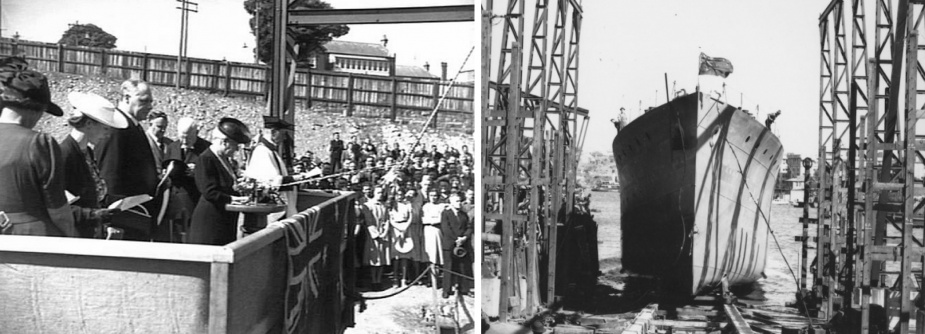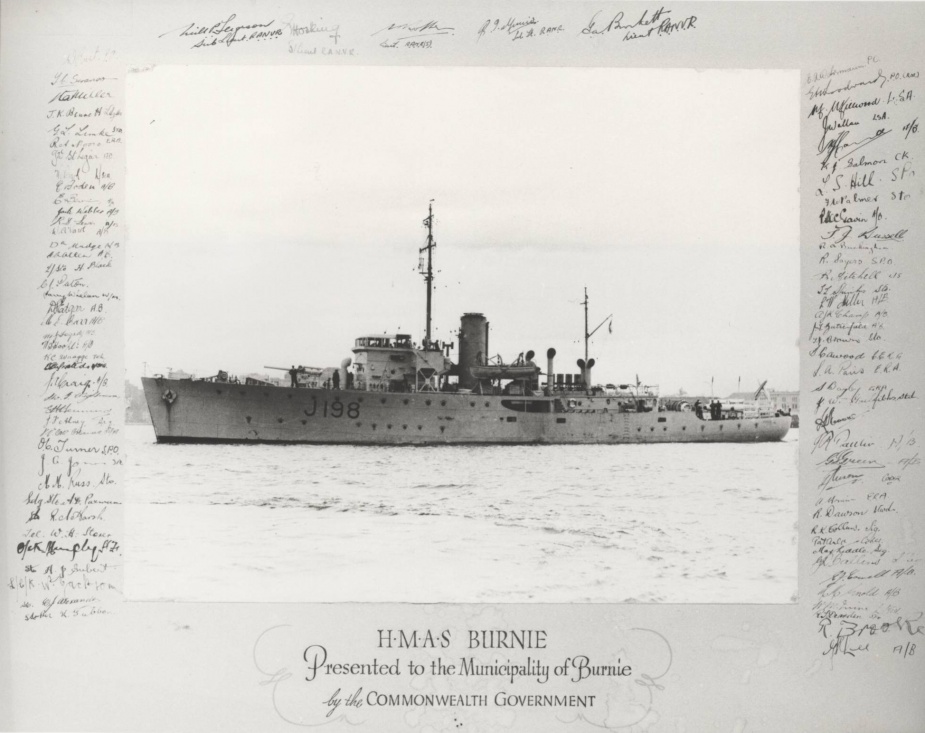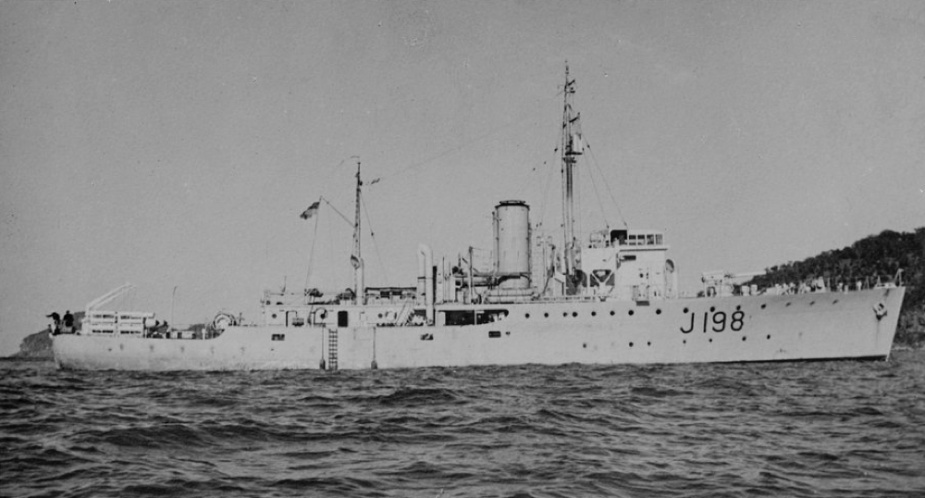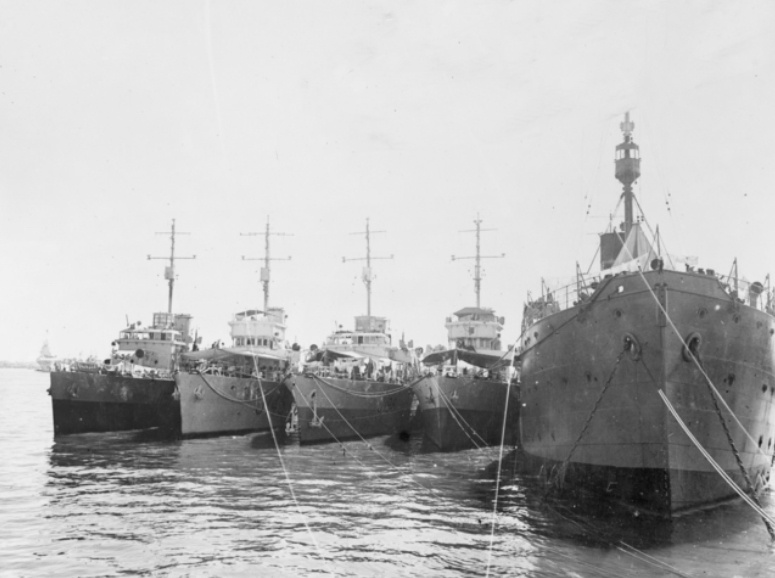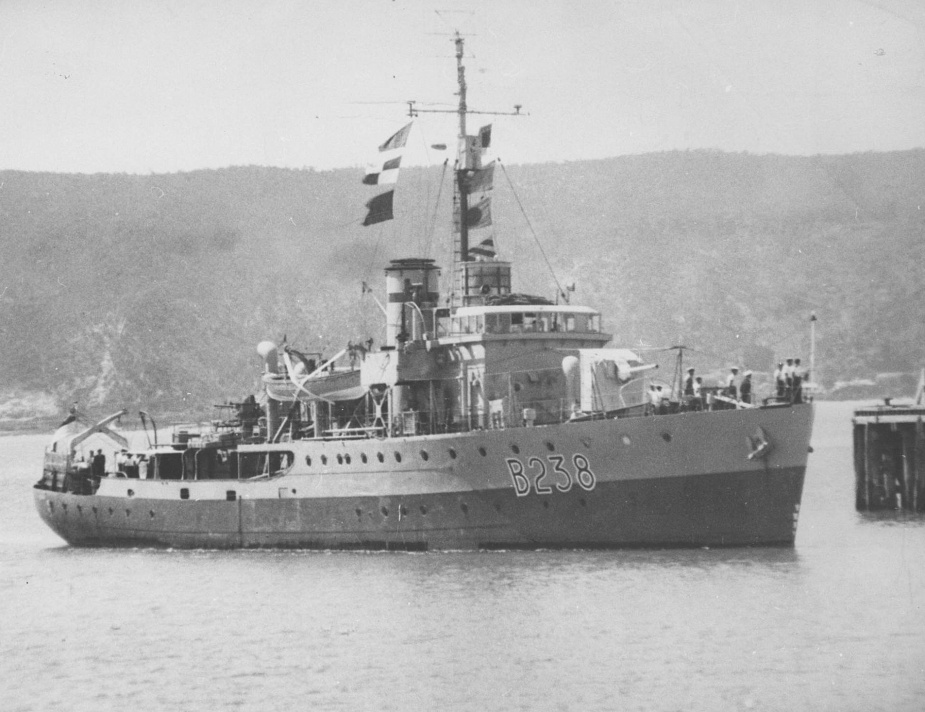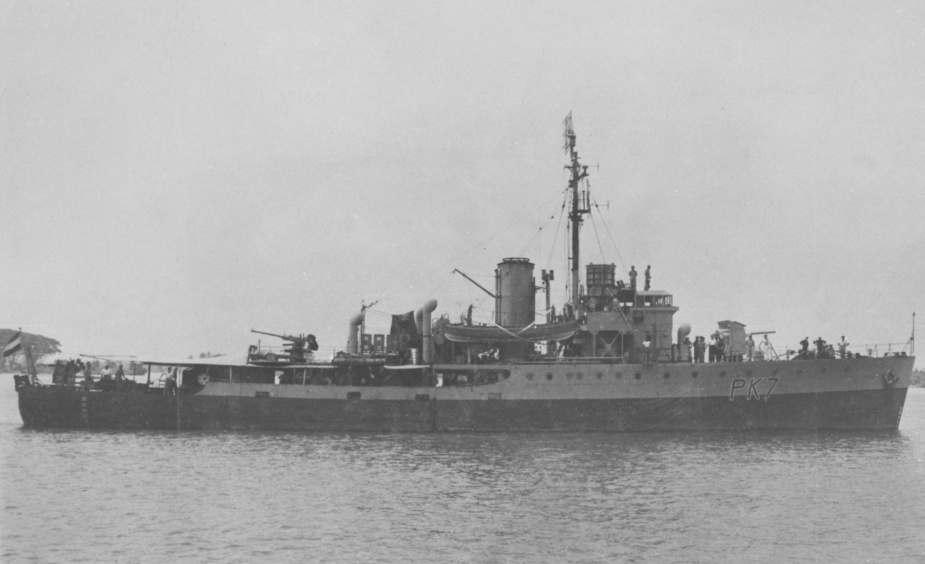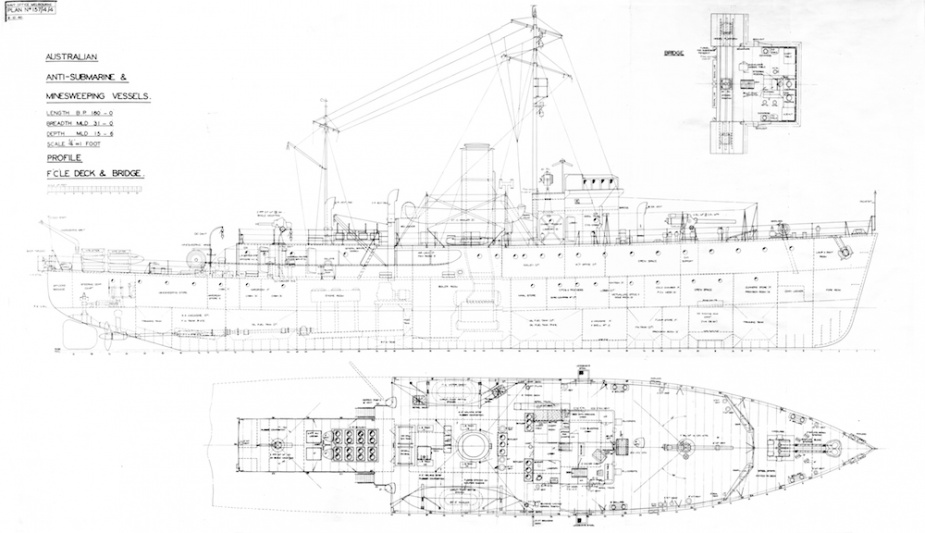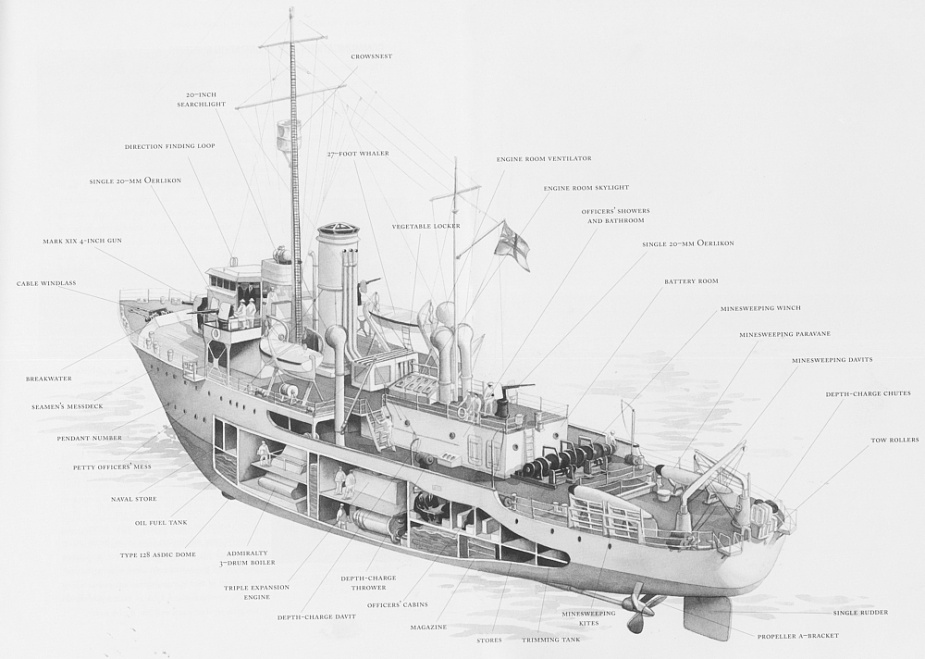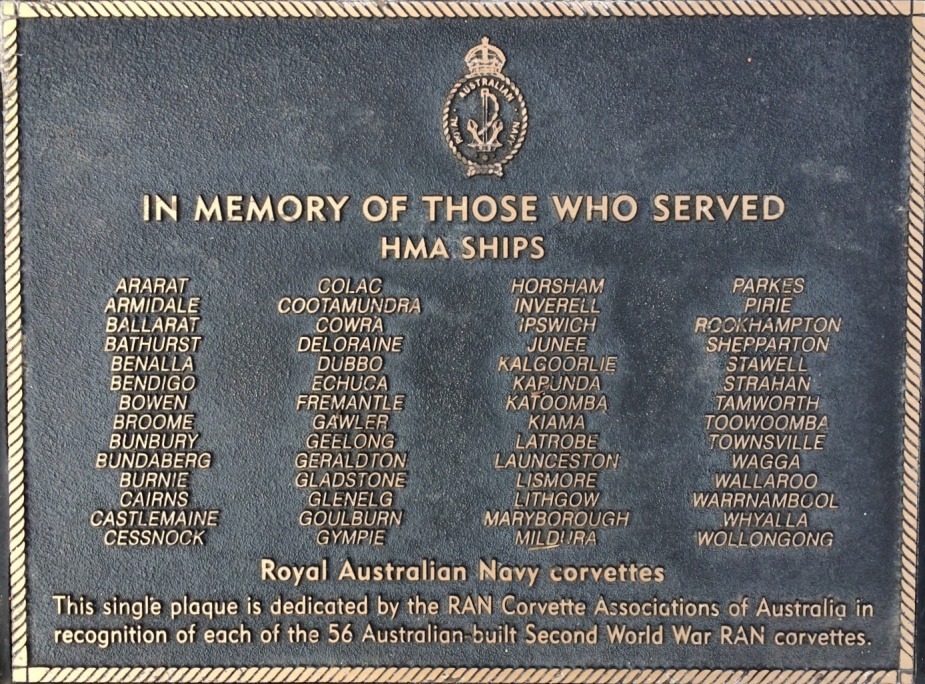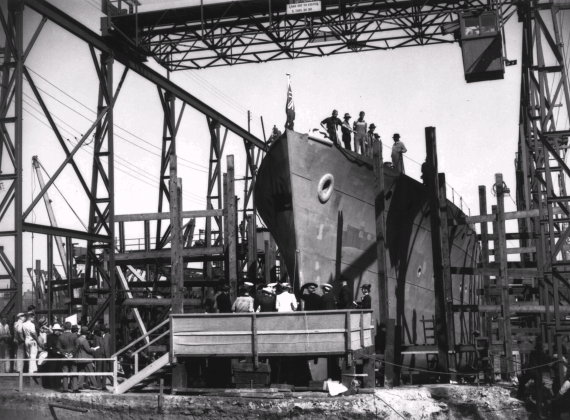
HMAS Burnie was one of sixty Australian Minesweepers (commonly known as corvettes) built during World War II in Australian shipyards as part of the Commonwealth Government"s wartime shipbuilding programme. Twenty (including Burnie) were built on Admiralty order but manned and commissioned by the Royal Australian Navy. Thirty six were built for the Royal Australian Navy and four for the Royal Indian Navy.
HMAS Burnie was laid down at Morts Dock Engineering Company, Balmain, Sydney, NSW on 4 June 1940. She was launched on 25 October 1940 by Lady King, wife of the Chairman of Directors, Mort"s Dock and Engineering Co and was the first RAN warship to carry the name of the port city on the north west coast of Tasmania. By the war"s end Mort"s Dock had constructed fourteen of the sixty Bathurst Class corvettes.
HMAS Burnie commissioned at Sydney on 15 April 1941 under the command Lieutenant George E Gough RANR(S).
HMAS Burnie initially served with the 20th Minesweeping Flotilla, joining the Flotilla off Cape Otway on 10 May 1941. She was then based temporarily at Fremantle for escort and patrol duties. In company with HMAS Goulburn she left Sydney for Singapore in June 1941 via Brisbane, Townsville, Cooktown, Thursday Island and Darwin, arriving in Singapore on 12 July 1941.
When Japan attacked Pearl Harbor in December 1941 Burnie was in Malayan waters. Thereafter, in company with other Australian corvettes, she helped to oppose the Japanese advance through the Netherlands East Indies. She was engaged in demolition work during this period - blowing up wharves, destroying oil and rubber stocks and military supplies - duties made extremely difficult by the constant Japanese air raids. During this period Burnie, for a time, wore the broad pennant of Commodore JA Collins RAN, then Commodore Commanding the China Force.
In September 1942 Burnie joined the Eastern Fleet and was engaged in anti-submarine patrols and escorting convoys to and from Bombay, Aden and Colombo.
In December 1944 Burnie and other Australian corvettes serving with the Eastern Fleet returned to Australia where they were formed into a Minesweeping Flotilla and attached to the British Pacific Fleet. In this capacity Burnie carried out anti-submarine duties and escorted convoys in the New Guinea, the Admiralties and the Philippines.
In August 1945 Burnie proceeded to Hong Kong where she was engaged in minesweeping operations. In November she was sweeping in Formosa Strait, Amoy, Morotai, Darwin and Fremantle.
In December 1945 Burnie paid an official visit to her namesake town in Tasmania where the ship"s company was entertained by the citizens. In January 1946 she returned to Port Phillip Bay and gave some of the children from the Mallee the pleasure of having a trip on a real warship.
On 4 June 1946 Burnie, in company with her sister ships HMA Ships Ipswich and Toowoomba, departed Brisbane for Ceylon where they were to be handed over to the Royal Netherlands Navy. At Colombo on 5 July 1946 the three ships paid off and were transferred to the Royal Netherlands Navy. Burnie was renamed Ceram. During her RAN commission Burnie had steamed over 160,000 miles. Ceram was removed from the effective list of the Royal Netherlands Navy in 1958.
Note: This video is hosted on YouTube. Department of Defence users will not be able to view this video on the Defence Protected Network.
This cine film has been placed online as part of the Sea Power Centre - Australia"s ongoing archival digitisation program.
Further reading
- "Notable Service to the Empire: Australian Corvettes and the British Pacific Fleet, 1944-45" by Hugh Campbell - published by Naval Historical Society of Australia Inc, Garden Island, 1995.
- "The Corvettes: Forgotten Ships of the Royal Australian Navy" by Iris Nesdale - published by the author, October, 1982.
- "Corvettes - Little Ships for Big Men" by Frank B Walker - published by Kingfisher Press, NSW, 1996.
- "The Australian Centenary History of Defence Volume III, The Royal Australian Navy" edited by David Stevens, Oxford University Press, South Melbourne, Victoria, Australia, 2001.
Specifications
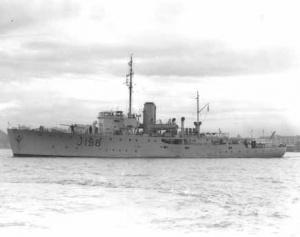 |
| Class |
Bathurst Class |
|---|---|
| Type |
Australian Minesweeper |
| Pennant |
J198 |
| Builder |
Mort"s Dock and Engineering Co Ltd, Sydney |
| Laid Down |
4 June 1940 |
| Launched |
25 October 1940 |
| Launched by |
Lady King, wife of the Chairman of Directors, Mort"s Dock and Engineering Co |
| Commissioned |
15 April 1941 |
| Decommissioned |
5 July 1946 |
| Dimensions & Displacement | |
| Displacement | 650 tons |
| Length | 186 feet |
| Beam | 31 feet |
| Draught | 8 feet 6 inches |
| Performance | |
| Speed | 15 knots |
| Complement | |
| Crew | 85 |
| Propulsion | |
| Machinery | Triple expansion, 2 shafts |
| Horsepower | 2000 |
| Armament | |
| Guns | 1 x 4-inch gun |
| Other Armament | 40 depth charges |
| Awards | |
| Battle Honours |
|
